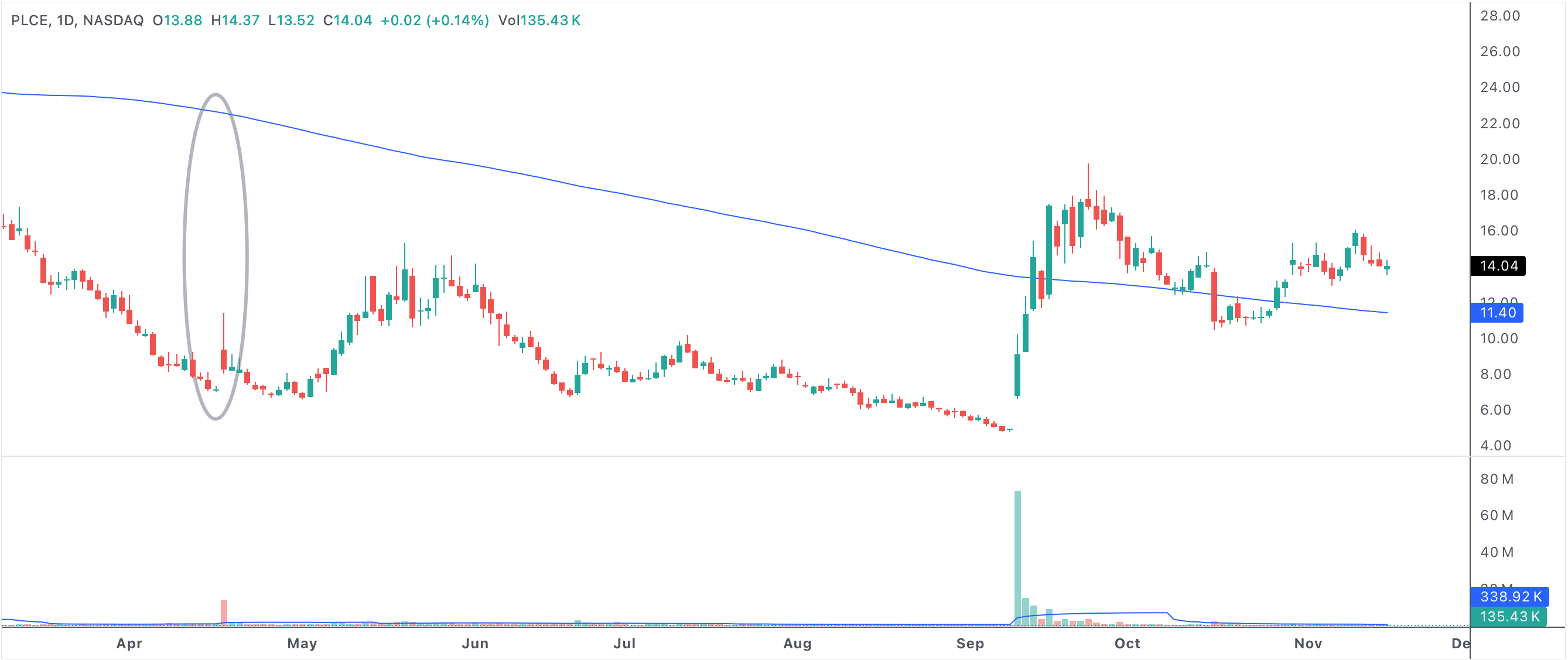Stocks With Highest Percentage Below 200 SMA - Oversold and Rebound Setup
When a significant percentage of stocks are trading below their 200-day simple moving average (SMA), it typically reflects a period of broad market weakness or an extended correction. While this might initially seem negative, many investors and technical analysts view such conditions as a setup for a bullish reversal. Historically, when the percentage of stocks below their 200 SMA is elevated, it can indicate the market is in an oversold state, presenting unique opportunities for those looking to enter at potentially undervalued levels.

below200sma
An example of a stock with highest % below the 200 SMA
Stocks with highest % below the 200 SMA
Understanding the 200-Day SMA as a Long-Term Indicator
The 200-day SMA is one of the most widely watched technical indicators in the stock market. It serves as a dividing line between long-term bullish and bearish trends. When a stock or the broader market falls below this level, it often suggests a loss of positive momentum. However, when a large percentage of stocks are below the 200 SMA, it may also signal that pessimism and fear are peaking, setting the stage for a future rebound.
Oversold Conditions and Value Opportunities
An abundance of stocks trading at significant discounts to their long-term moving averages often draws attention from value-oriented and contrarian investors. These investors look for moments when fear is widespread, and prices are well below intrinsic value. This oversold condition can create appealing entry points for those who believe that fundamentals remain intact and that the market will eventually recover.
- Oversold markets often present opportunities for long-term gains as negative sentiment fades.
- Value investors and institutions may begin accumulating stocks seen as undervalued based on technical and fundamental analysis.
- A high percentage of stocks below the 200 SMA can indicate that the worst of the sell-off may be nearing its end.
Institutional Behavior and Market Bottoms
Institutional investors track the number of stocks below key moving averages to gauge market sentiment. When this percentage is unusually high, many institutions start to deploy cash reserves to buy fundamentally strong companies trading at a discount. This buying pressure can serve as the catalyst for a trend reversal, especially when accompanied by stable or improving economic indicators.
Confirmation Signals and Timing the Rebound
While a high percentage of stocks below the 200 SMA is a useful signal, experienced traders often wait for additional confirmation before acting. Common confirmation signals include an increase in market breadth, higher trading volume on up days, and individual stocks starting to reclaim their 200-day moving averages. These signs suggest that buyers are gaining control and that a market recovery may be underway.
Market Psychology and Sentiment Shifts
Periods when many stocks are deeply below their 200 SMA often coincide with negative headlines and widespread pessimism. Historically, such environments precede powerful rallies as sentiment shifts from fear to optimism. When buyers return and stocks begin to recover, the move higher can be swift and broad, especially if institutional money flows back into the market.
- Sharp rebounds frequently occur after periods of extreme oversold conditions.
- Monitoring breadth indicators and leadership stocks can help identify the earliest signs of a new bullish trend.
- Patience and discipline are key, as timing the bottom is challenging but the risk-reward profile can be favorable.
Summary: Opportunity in Oversold Markets
In summary, a high percentage of stocks below their 200 SMA is often more than a sign of recent weakness—it can be the signal value investors have been waiting for. These periods may provide the best opportunities for those willing to act while fear dominates. By combining technical analysis with fundamental insight and waiting for confirmation, investors can capitalize on the market's natural cycles and position themselves for the next rebound.